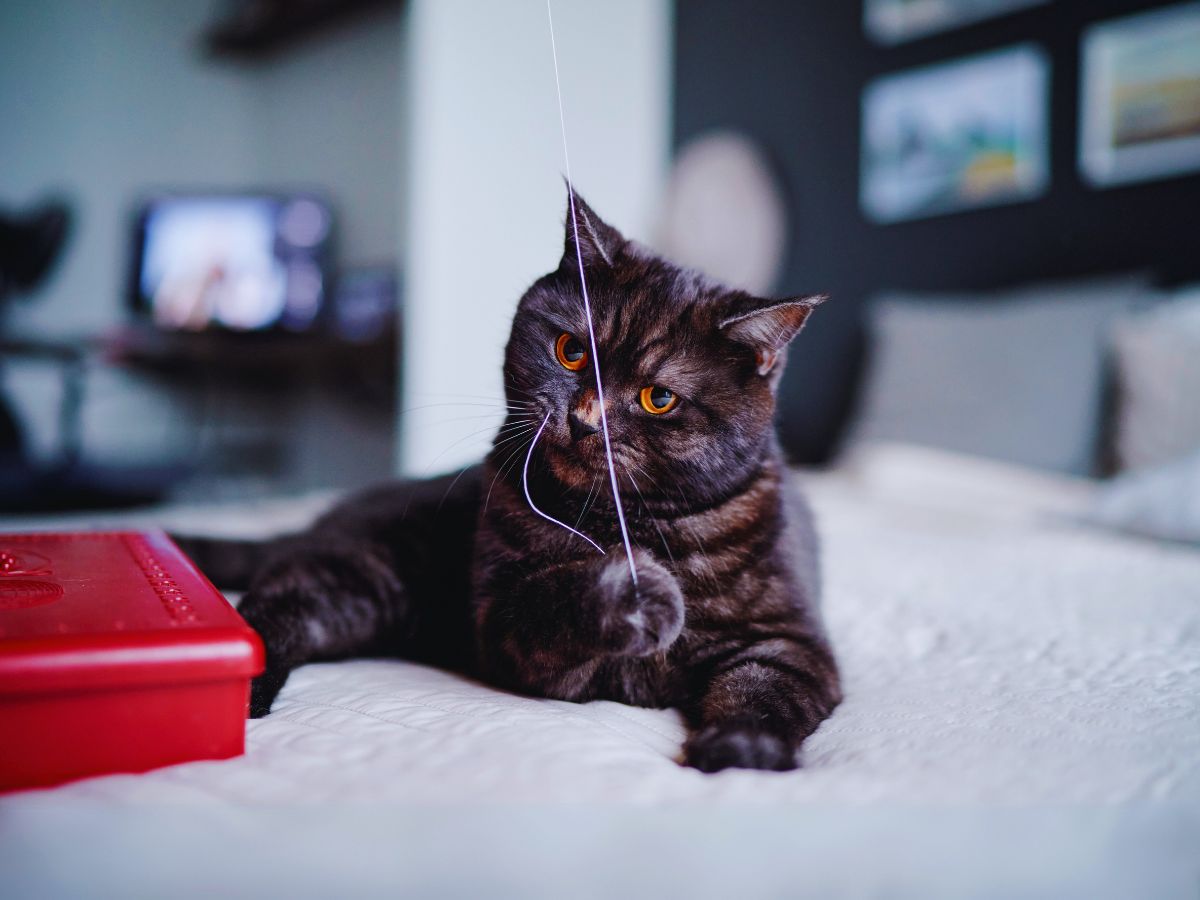Did Your Dog or Cat Swallow Something They Shouldn't?
Article - 5 min read • Updated Mar 28, 2025
Medically reviewed by Dr. Arman Chen, BVSc (Qld.), BSc (Leic.)

What is Foreign Body Ingestion?
Foreign body ingestion occurs when a pet swallows an object that isn’t food. While some small objects may pass through harmlessly, others can cause serious health problems, including blockages, perforations, or poisoning. This is a common emergency we see here at Gaia Vets, and pets who get diagnosed early and receive medical intervention often have better outcomes.
What Should I Do If I Suspect My Pet Has Swallowed Something?
Contact your vet immediately. Even if you're only suspicious, early intervention can prevent serious complications and costly emergency surgery.
A retrospective study of 208 cases of gastrointestinal foreign bodies in dogs and cats showed an overall recovery rate of 91%. Survival rates were 94% in dogs and 100% in cats for solid objects that don’t stretch or tangle, while survival rates for linear foreign bodies (i.e. long, string-like objects such as thread or ribbons that can get tangled in the intestines) were lower—80% in dogs and 63% in cats.
“If a pet has symptoms for a long time, has swallowed a string-like object, or needs multiple surgeries on the intestines, the chances of survival are lower.” - Dr Claire Tan, BVSc (Qld.), BAppSc (Qld.)
What are the Common Things That Dogs and Cats Can Swallow?
Some pets are more curious or prone to chewing than others. Here are some of the most commonly ingested objects:
For Dogs
- Bones (chicken, pork, fish)
- Socks, underwear, and fabric
- Toys (rubber balls, squeakers, ropes)
- Corn cobs and fruit pits such as durian seeds
- Plastic objects (bottle caps, wrappers)
In dogs, commonly ingested items include socks (12.8%), plastic fragments (12.8%), rags (11.6%), bones (8.1%) and wooden toothpicks (5.8%).
Some pet owners do feed their dogs cooked bones, but in fact cooked bones tend to be brittle and may splinter easily, resulting in an increase of perforating the stomach or intestine lining. Read more about feeding bones here.
For Cats
- String, thread, and yarn
- Rubber bands and hair ties
- Needles (often attached to thread)
- Small plastic items
- Christmas decorations
Dogs and cats may accidentally swallow non-food items due to their natural behaviours and instincts:
- Curiosity and Playfulness: Especially in younger animals, exploring their environment often involves mouthing or chewing objects, which can lead to accidental ingestion.
- Teething in Puppies: To alleviate the discomfort of teething, puppies may chew on various objects, sometimes swallowing pieces in the process.
- Hunting and Predatory Instincts in Cats: Cats may be attracted to string-like objects that mimic the movement of prey, leading them to chew and potentially ingest items like yarn or thread.
- Scent and Taste Attraction: Items that retain food odours or have appealing textures may entice pets to chew and swallow them, e.g. satay sticks
- A Condition Known As Pica: Some pets develop a compulsion to eat non-food items, i.e. Pica, which can come about from nutritional deficiencies, boredom, or behavioural issues.
In this case, your vet may recommend muzzling when going out on walks to prevent accidental ingestion and higher vigilance at home to prevent ingestion.

What are The Common Signs That My Pet Has Ingested a Foreign Object?
Pets may not show immediate symptoms after swallowing an object. However, warning signs include:
- Vomiting or gagging
- Loss of appetite
- Abdominal pain or bloating
- Straining to poo or diarrhoea
- Lethargy and weakness
- Excessive drooling
If your pet exhibits any of these symptoms, consult your vet immediately.
What Treatment Options are Available If My Pet Has Swallowed a Foreign Object?
Diagnosis
Your vet will perform a physical exam and may use diagnostic tools such as:
- X-rays or ultrasound to locate the object
- Endoscopy for smaller objects in the stomach
- Blood tests to check for secondary infections or complications
Treatment Options
- Inducing Vomiting: Only safe if the object is small, smooth, and hasn’t moved past the stomach.
- Endoscopic Removal: A non-surgical method using a flexible camera.
- Surgery (Enterotomy/Gastrotomy): Required for obstructions that cannot be removed through endoscopy.
- Dedicated Monitoring: In some cases, the object may pass naturally, but only under close veterinary supervision.
These treatments should be conducted by your vet, after thorough checks have been done. Pet owners should not attempt to induce vomiting at home or take a wait-and-see approach.
Which Dog and Cat Breeds are More Likely to Swallow Objects?
According to PetSure claims data (2023), the dog breeds most at risk of foreign body ingestion include Miniature Dachshunds, Golden Doodles, Golden Retrievers, Cocker Spaniels, and Labrador Retrievers.
For cats, Burmese, Domestic Medium Hair, Ragdoll, British Short Hair, and Domestic Short Hair breeds are most commonly affected.
How Can I Prevent My Dog or Cat From Swallowing Foreign Objects?
Keep small objects, trash, and dangerous items out of reach.
- Provide safe, appropriate chew toys.
- Supervise playtime, especially for pets prone to chewing.
- Store strings, ribbons, and sewing materials securely.
- Use pet-proof storage for food waste and household items.
At Gaia Vets, we’re here to help. If your pet is experiencing signs of foreign body ingestion, contact us immediately.